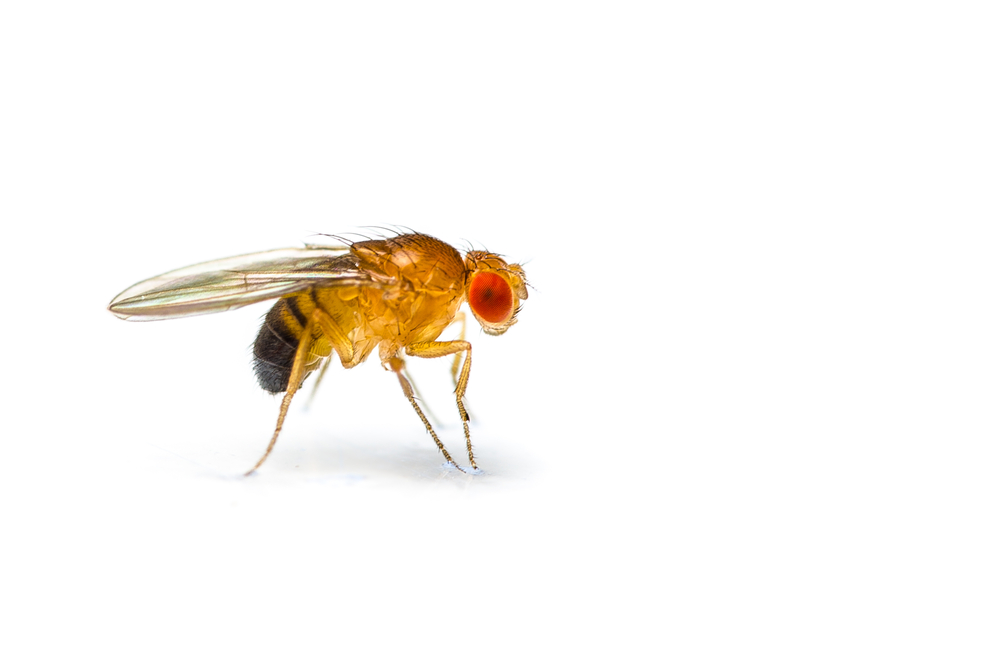Simple Genetic System Controls Posture-Related Behavior, Insect Study Suggests

A small molecule that regulates the expression of genes, called microRNA, controls nerve cells involved in postural control by affecting a gene within motor neurons, according to a recent fruit fly study.
The research, “A Single MicroRNA-Hox Gene Module Controls Equivalent Movements in Biomechanically Distinct Forms of Drosophila” was published in Current Biology.
Parkinson’s disease is a multi-system neurodegenerative disorder with motor and nonmotor features. Among motor symptoms and signs are resting tremor, slowness of movement (bradykinesia), rigidity, impairment of posture, balance, and gait.
“Given that the circuit components of behavior are built under the influence of genes, the question arises as to what extent the genetic make-up of the organism affects the control of its movements,” the researchers wrote.
Scientists at the University of Sussex in Brighton, England, and the Champalimaud Centre for the Unknown in Lisbon, Portugal, looked at distinct developmental stages of the fruit fly — an animal model commonly used in the lab — and how they were affected by a genetic system composed of a microRNA, called miR-iab4 molecule, and a particular Hox gene, called Ultrabithorax. This microRNA has been linked to motor control in fruit flies.
Of note, miRNAs are small, highly conserved non-coding RNA molecules involved in the regulation of gene expression (the process by which information in a gene is synthesized to create a working product, like a protein). Hox genes are a family of genes that act as major regulators of animal development.
By using fruit flies, scientists can isolate genes with associated roles in movement control, such as the Hox genes, which specify body segments during embryonic development — i.e., whether a segment of the embryo will form part of the head, thorax, or abdomen.
These genes have been thought to be involved only in the formation of body structures and the brain. But researchers now have found that microRNAs control the function, rather than the morphology, of motor neurons, and that post-developmental changes in the expression of Hox genes can modulate behavior in the adult fruit fly.
The team studied the animals’ self-righting behavior, an important motor milestone in invertebrate development. Self-righting refers to an innate response that allows a change in the posture (position) of an organism in respect to the ground. For instance, in fruit fly larva it enables the insect to rectify its orientation if turned upside down.
The miR-iab4 miRNA was found to be essential for normal self-righting behavior across fruit fly developmental stages — embryo, larva and adult — which all are associated with different morphology, neural constitution, and biomechanics.
Researchers also found that this microRNA molecule inhibited the Ultrabithorax gene in a specific subset of adult motor neurons, and that such inhibition elicited the self-righting behavior, indicating changes in Hox gene function can modulate motor control in the adult insect.
How does this apply to humans? After birth, newborns reach several milestones, including motor ones, which doctors use to monitor infants’ development. One of those milestones is rolling over, an equivalent to the fruit fly’s self-righting behavior.
These fruit fly findings hold the potential to unravel the molecular basis of movement-related neurodegenerative disease, such as Parkinson’s.
“Although our work is focused on deducing fundamental biological principles — what you may call “basic science” — there are several possible biomedical projections of this study,” Claudio Alonso, PhD, said in a press release. Professor Alonso is Subject Chair for Neuroscience at the School of Life Sciences, a member of the research center of Sussex Neuroscience, and senior author of the study.
“For example, aging, as well as various forms of neural disease including motor neurone disease, Parkinson’s and Huntingdon’s disease, can degrade posture and motor control, leading to a deterioration of health and quality of life. In order to understand more about these conditions and to be able to map the anomalies caused by disease or advanced age, we need a deeper understanding of the genetic and physiological factors that underlie normal posture control and movement,” Alonso said.
According to Alonso, this is the first study to report Hox-dependent roles in neurophysiological and behavioral control in the fully formed organisms (once development has concluded).





